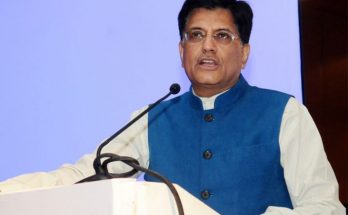When the United Progressive Alliance II formed a Cabinet committee of seven ministers on media two years ago, I thought that it realised the seriousness of communication tasks at hand. Six months later, 11 ministers were designated as spokespersons of the government to strengthen media outreach; and thereafter, again, a couple of senior Cabinet ministers were assigned to go to the state capitals to highlight the achievements of the UPA II. During the same period, the Congress party changed its spokespersons several times. Manish Tewari is perhaps the only spokesperson in nine years who made some mark. What has been the outcome of all these initiatives in the party and the government?
Changed Times
In the last few years, the Congress party has never taken on any public issue head on. Instead, it takes a safe middle path which, at most, saves it from immediate embarrassment. At the moment, the Congress party is not equipped, nationally or regionally, to be the agenda setter for public discourse. It reacts, responds or explains situations in what seems like a defensive play.
Vasant Sathe’s repeated call for a presidential system some years ago, for example, was never viewed as divisive as Salman Khurshid’s reference to the “cameo” role of Rahul Gandhi more recently. In fact, during the early years of Mrs. Indira Gandhi’s leadership, the reflections and outbursts of “young Turks” performed a rather useful role. The prime minister’s observation in 2011 that the country should be “ashamed” of the low nutrition levels of school-going children didn’t cause as many ripples as Jai Ram Ramesh’s utterances (toilet vs. cell phone) or P.C. Chidambaram’s analogies (ice cream vs. inflation). The prime minister’s admission that he is “not satisfied” with the implementation of flagship Mahatma Gandhi National Rural Employment Guarantee Act (MNREGA) did not lead to any media debate of either kind perhaps because it was not taken with seriousness that it deserve. The question is, why not? One is treated as a frank admission and the sharing of a concern, the other ones, on the other hand, are handled as cover-ups or callous talk.
Temporal View
First, it appears that the Cabinet’s perspective of communication challenge is out of context and out of focus and, quite often, an overreaction. Second, it is also obvious that the party lacks an understanding of how to orchestrate public opinion and the communication processes. Third, the party-government coordination has to be an ongoing affair, not merely during crises, nor limited to pre-election-time. PR–outsourced is no substitute for political acumen or activism.
Communication Gap
The UPA has initiated a rights regime, an era of transparency and the formal involvement of civil society in policy making as never before. But that has not been put across to the larger public until now. In fact, the impression in the country is that neither the Congress party nor the government was enthusiastic in supporting the Right to Information bill. In another example, efforts to revitalise the youth Congress by holding inner party elections have received adverse press coverage in state after state. Although the process was transparent and some new talent was inducted, there was no effort before, during or after to communicate the context and the implications. In the absence of such spoon-feeding, the news media goes with whatever amuses it and presents everything as an exposé.
That the recent biased coverage of India by global media is motivated and orchestrated can be made out in the indiscriminate way some survey findings are being quoted — and covered — by local news media. What have we done to expose the gang-up tactics of foreign investors even after the reports of Time or the Independent culminating in President Obama’s assessment?
Finding Focus
Can we even identify the flagship programmes of UPA or how many are there? Can anyone recount or specify? Are there too many? Do they keep changing? And then there are PM’s 15-point programme and the old 20-point programme? Where is the focus? Both approach and strategy are missing. A communication strategy has to encompass all phases of a government functioning and as an ongoing phenomenon. The very positioning strategy of the government as a whole as well as its individual or specific programmes and schemes — flagship ones, in particular — is essential.
Missing Link
There are a number of studies around the country showing that general awareness is low about specific government programmes, particularly among those at whom those schemes are targeted. There also appear to be no local ground-level enabling efforts. Allegations also stand that the role of party cadres has been minimal. Without measures to correct the situation on the ground, how can the implementation image be better?
Mission Vision
Political leaders are unpredictable these days and also go to extremes to tilt the scales. Skills to anticipate such ambivalence about emerging scenario are essential, as are planning for the repercussion of different players’ positions in the opinion-making process. This talent comes from experience, insights, and research. But this skill is evident at hardly any level. A course-corrective approach is rare, even though the Group of Ministers on media was mandated by the Prime Minister’s Office (PMO) “to analyse the events of the day and issue suitable directions to nodal officers to prepare appropriate material for briefing the media”.
Reverse Engineering
There are no recent examples where a controversy or contentious media coverage of the UPA was reversed or converted into an advantage. In the last three years, most adverse public communication situations occurred either because of ignorance or over-confidence, or even under estimation of a situation – and sometimes a combination of all three. Denial and waiting for information are the most well- worn courses of action for spokespersons. However, denial and rebuttal generally serves to fuel controversy. Conceding and taking action could be better for the credibility of a message and the messenger.
Gearing Up
A couple of years ago it was expected that Sam Pitroda would come up with certain specific suggestions and help set up a communication networks for the party within and across the states. There has been no evidence of any such thing, so far. Then, a few months ago, a new division in the information and broadcasting ministry for new media was supposed to have taken off. This is jarring as it comes at a time when it’s being felt widely that it would be best to wind up the Ministry of Information & Broadcasting itself and go for a more specialised Information Board for a credible support to the government. Obviously, an understanding of dynamics and processes of public communications is far more important than a new technology being in position.
The relevance of social media is being overrated in the context of a Lok Sabha poll now. The big question remains: How can the Congress party expect to retain its lead in 2014 without streamlining its communication practices? More importantly, how can it move forward without learning and applying lessons from its past?
(




